From the Ventura County Star, Sunday, April 12, 2009
Luis Angel Ramos received a cheap mountain bike as a gift when he was 12. Ramos would ride it around the city streets in Oxnard and occasionally go as far as Camarillo. But Ramos realized there was an entire world beyond the pavement and wondered what it would be like to explore the back country on two wheels. The Channel Islands High senior never thought he would have the chance until this year.
Defying cultural stereotypes and overcoming financial hurdles, Channel Islands High has formed a mountain bike club. The Raiders are the only Ventura County team participating in the inaugural season of the Southern California Interscholastic Cycling League. They finished second in their first race last month while competing against many teams with more experience and better equipment. Their final race is May 3 at the Cow Pie Invitational in Santa Ynez.
“I really, really, really like it,” Ramos said. “The views are amazing when you are riding. Every time we are out high on a mountain, you can see all of Oxnard. It is just beautiful.”
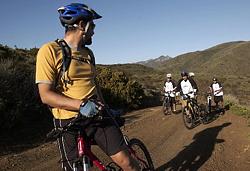
Channel Islands High School Mountain Biking team assistant coach Alfredo Salcido of Oxnard takes a break at the Point Mugu State Park |
The club was the brainchild of Erick Kozin, the owner of NEMA International, a mountain bike apparel company in Ventura. Kozin, 34, who raced professionally for five years, heard about the high school league while attending the CORBA Fat Tire Festival at Castaic Lake. Kozin thought it would be great to have a team from the county participate. His brother is a counselor at Channel Islands, so Kozin ran the idea by him and was put in contact with school administrators.
“I just really wanted to give back and do something kind of cool,” said Kozin, a Hueneme High graduate. “When I was in high school, we didn’t have anything like this. If you wanted to ride your bike, you were on your own. This is an opportunity for kids to do something positive that can stick with them forever.”
Channel Islands announced the formation of the club over the school intercom last November. Kozin expected maybe a handful of kids to show up for the first meeting, but ended up with more than 20. Most of the students expressed an interest in trying something outside of the average sports, although only one or two even owned a bike.
“It’s not your typical mountain bike team,” Kozin said. “These kids didn’t have any experience. They are learning as they go.”
Sophomore Shaylee Quezada wasn’t sure if she could join the club because she couldn’t afford the $200 fee. But Kozin assured students they wouldn’t be turned away as long as they made one promise. “If you can commit to this like you would any other sport, we will provide you with everything you need to be part of the club,” he said. “You just have to attend races and work hard.” That was a relief to Quezada. When asked if she ever owned a bike before, the outgoing 15-year-old replied, “I don’t think tricycles count.”
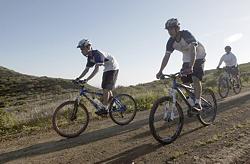
Channel Islands High School Mountain Biking team members Luis Angel Ramos, from left, Humberty Solorzano and Shaylee Quezada make their way down a hill at the Point Mugu State Park |
Helping hands
Quality mountain bikes can cost anywhere from $500 to $4,000, a price nobody on the team can afford. But Channel Islands is receiving assistance from several sources to keep the team on the trails. Trek Bike Store in Ventura has loaned the club two bikes for this season while Kozin and assistant coach Alfredo Salcido are providing the other four. Last week, the Channel Islands Bike Club approved a $6,000 grant for the high school team, and Albabici LLC — an Italian cycling supplier in Oxnard — has given the team free shoes, bike seats and bags.
The team meets for practice three days a week after school. Kozin and Salcido use their vans to transport the team and bikes to local trails for training. “I have a love-hate relationship with going downhill,” Quezada said. “I like going really fast, it’s just that it is really bumpy and my bike wants me to get off of it sometimes. But I have to sit through and get down that hill.”
Learning proper mountain biking skills, technique and trail etiquette has instilled confidence in sophomore Robert Equihua. “It is awesome because you can go places where you have never been and it is very challenging,” he said. “You accomplish things you never thought you could actually do.” Like finishing second in the first race of the season despite hardly anybody knowing where Channel Islands was even located. “It was intimidating to see the other teams with a lot more experience that just had everything maybe handed to them,” Kozin said. “But our team left there feeling so good about themselves, and that was probably the biggest reward. I was probably more excited than they were.”
Blazing new trails
Quintin Easton is the president of the Southern California Interscholastic Cycling League. After being laid off from his job at Wells Fargo two years ago, Easton went on a mountain bike ride to figure out the next step in his life. He always enjoyed working with kids, and realized many were deprived of the joys of mountain biking. Easton wanted to start a series races for high school students, and discovered there was already a similar league in place in Northern California. He contacted the founders of the Northern California High School Mountain Bike Racing League, and inquired about extending it to Southern California. The founders said they would love to, but didn’t have the money.
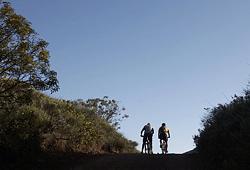
Channel Islands High School Mountain Biking team member Robert Equihua, 15, and assistant coach Alfredo Salcido of Oxnard make their way up a hill at the Point Mugu State Park |
Easton went to his father-in-law Jim Easton, who is the president of the Easton Sports Inc., which is known for producing archery and baseball and softball bats. “The Easton Sports empire was built on archery, but he told me there was money set aside for cycling as well,” Quintin Easton said. “He has $40 million in the Easton Foundation he has to give away. So we put together a plan and he liked it and gave the league $100,000 to expand.”
The four-race SoCal League mirrors the NorCal League in every way, but Quintin Easton has more ambitious goals for mountain biking. He wants to make the sport available at all public and private schools across America, and Channel Islands is a perfect symbol for his quest. “We believe very strongly that you can’t have tryouts for a school team. If you want to ride, you are invited to ride. You don’t have to be an expert and you don’t have to own your own bike,” Easton said. “All schools and all kids from any socioeconomic backgrounds are welcome.”
Ramos is slowly convincing his skeptical sister of that premise after recording his first individual top-10 finish last weekend. “She was joking around saying I was racing out there with the rich kids,” Ramos said. “She was basically saying Mexicans don’t really mountain bike, everyone else does. That is why I am trying to break those barriers. Hopefully in a few years it will be more common and more Ventura County schools will be doing it.”


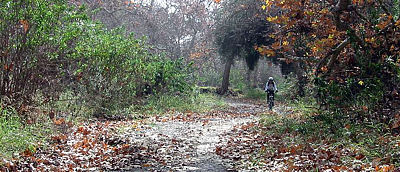 Grade a 12 foot wide road with wider turn-outs all the way up Sullivan Canyon from Queensferry to Mulholland;
Grade a 12 foot wide road with wider turn-outs all the way up Sullivan Canyon from Queensferry to Mulholland; June 19, 2009
June 19, 2009


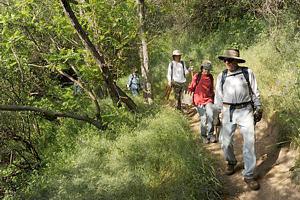
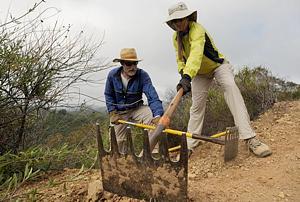
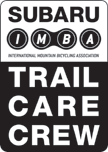

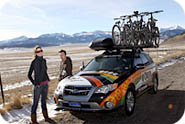
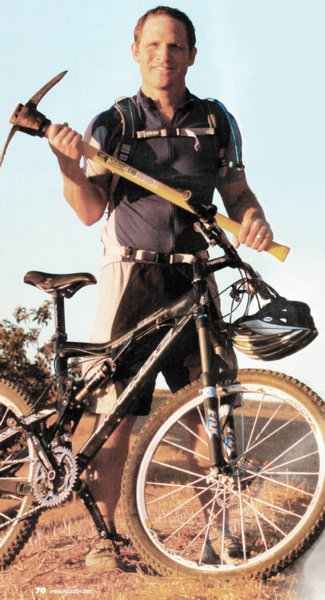 “It’s one thing that I’m alive today because of mountain bikes,” reflects Concerned Off-Road Bicyclists Association’s (CORBA) Jeff Klinger. “I want everyone in Los Angeles to have the same chance as me. One of the greatest things about mountain biking is that it is so much fun and so healthy. America needs it bad. We are overtaken by obesity, diabetes and other poor health issues related to nonactivity. Mountain biking is one of the solutions. It’s stimulating, never gets boring. and is a very addictive cardiovascular exercise. You can’t stop doing it! CORBA’s goal is to further mountain bike recreation in and around the Los Angeles area.
“It’s one thing that I’m alive today because of mountain bikes,” reflects Concerned Off-Road Bicyclists Association’s (CORBA) Jeff Klinger. “I want everyone in Los Angeles to have the same chance as me. One of the greatest things about mountain biking is that it is so much fun and so healthy. America needs it bad. We are overtaken by obesity, diabetes and other poor health issues related to nonactivity. Mountain biking is one of the solutions. It’s stimulating, never gets boring. and is a very addictive cardiovascular exercise. You can’t stop doing it! CORBA’s goal is to further mountain bike recreation in and around the Los Angeles area.
